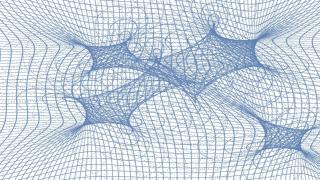Bibcode
García-Lorenzo, B.; Monreal-Ibero, A.; Pereira-Santaella, M.; Thatte, N.; Ramos Almeida, C.; Galbany, L.; Mediavilla, E.
Bibliographical reference
Astronomy and Astrophysics
Advertised on:
3
2022
Journal
Citations
1
Refereed citations
1
Description
Context. The formation and evolution of galaxies appear linked to the growth of supermassive black holes, as evidenced by empirical scaling relations in nearby galaxies. Understanding this co-evolution over cosmic time requires the revelation of the dynamical state of galaxies and the measurement of the mass of their central black holes (MBH) at a range of cosmic distances. Bright active galactic nuclei (AGNs) are ideal for this purpose.
Aims: The High Angular Resolution Monolithic Optical and Near-infrared Integral field spectrograph (HARMONI), the first light integral-field spectrograph for the Extremely Large Telescope, will transform visible and near-infrared ground-based astrophysics thanks to its advances in sensitivity and angular resolution. We aim to analyse the capabilities of HARMONI to reveal the stellar morpho-kinematic properties of the host galaxies of AGNs at about cosmic noon.
Methods: We made use of the simulation pipeline for HARMONI (HSIM) to create mock observations of representative AGN host galaxies at redshifts around cosmic noon. We used observations taken with the Multi Unit Spectroscopic Explorer of nearby galaxies showing different morphologies and dynamical stages combined with theoretical AGN spectra to create the target inputs for HSIM.
Results: According to our simulations, an on-source integration time of three hours should be enough to measure the MBH and to trace the morphology and stellar kinematics of the brightest host galaxies of AGNs beyond cosmic noon. For host galaxies with stellar masses < 1011 M⊙, longer exposure times are mandatory to spatially resolve the stellar kinematics.
Aims: The High Angular Resolution Monolithic Optical and Near-infrared Integral field spectrograph (HARMONI), the first light integral-field spectrograph for the Extremely Large Telescope, will transform visible and near-infrared ground-based astrophysics thanks to its advances in sensitivity and angular resolution. We aim to analyse the capabilities of HARMONI to reveal the stellar morpho-kinematic properties of the host galaxies of AGNs at about cosmic noon.
Methods: We made use of the simulation pipeline for HARMONI (HSIM) to create mock observations of representative AGN host galaxies at redshifts around cosmic noon. We used observations taken with the Multi Unit Spectroscopic Explorer of nearby galaxies showing different morphologies and dynamical stages combined with theoretical AGN spectra to create the target inputs for HSIM.
Results: According to our simulations, an on-source integration time of three hours should be enough to measure the MBH and to trace the morphology and stellar kinematics of the brightest host galaxies of AGNs beyond cosmic noon. For host galaxies with stellar masses < 1011 M⊙, longer exposure times are mandatory to spatially resolve the stellar kinematics.
Related projects

Relativistic and Theoretical Astrophysics
Introduction Gravitational lenses are a powerful tool for Astrophysics and Cosmology. The goals of this project are: i) to obtain a robust determination of the Hubble constant from the time delay measured between the images of a lensed quasar; ii) to study the individual and statistical properties of dark matter condensations in lens galaxies from
Evencio
Mediavilla Gradolph
![Teacup in [O III] and CO(2-1) Supermassive black holes modify the distribution of molecular gas in the central regions of galaxies. Credit: HST and C. Ramos Almeida.](/sites/default/files/styles/crop_square_2_2_to_320px/public/images/project/teacup_english.001.jpeg?itok=dF4bDw-q)
Nuclear Activity in Galaxies: a 3D Perspective from the Nucleus to the Outskirts
This project consists of two main research lines. First, the study of quasar-driven outflows in luminous and nearby obscured active galactic nuclei (AGN) and the impact that they have on their massive host galaxies (AGN feedback). To do so, we have obtained Gran Telescopio CANARIAS (GTC) infrared and optical observations with the instruments
Cristina
Ramos Almeida